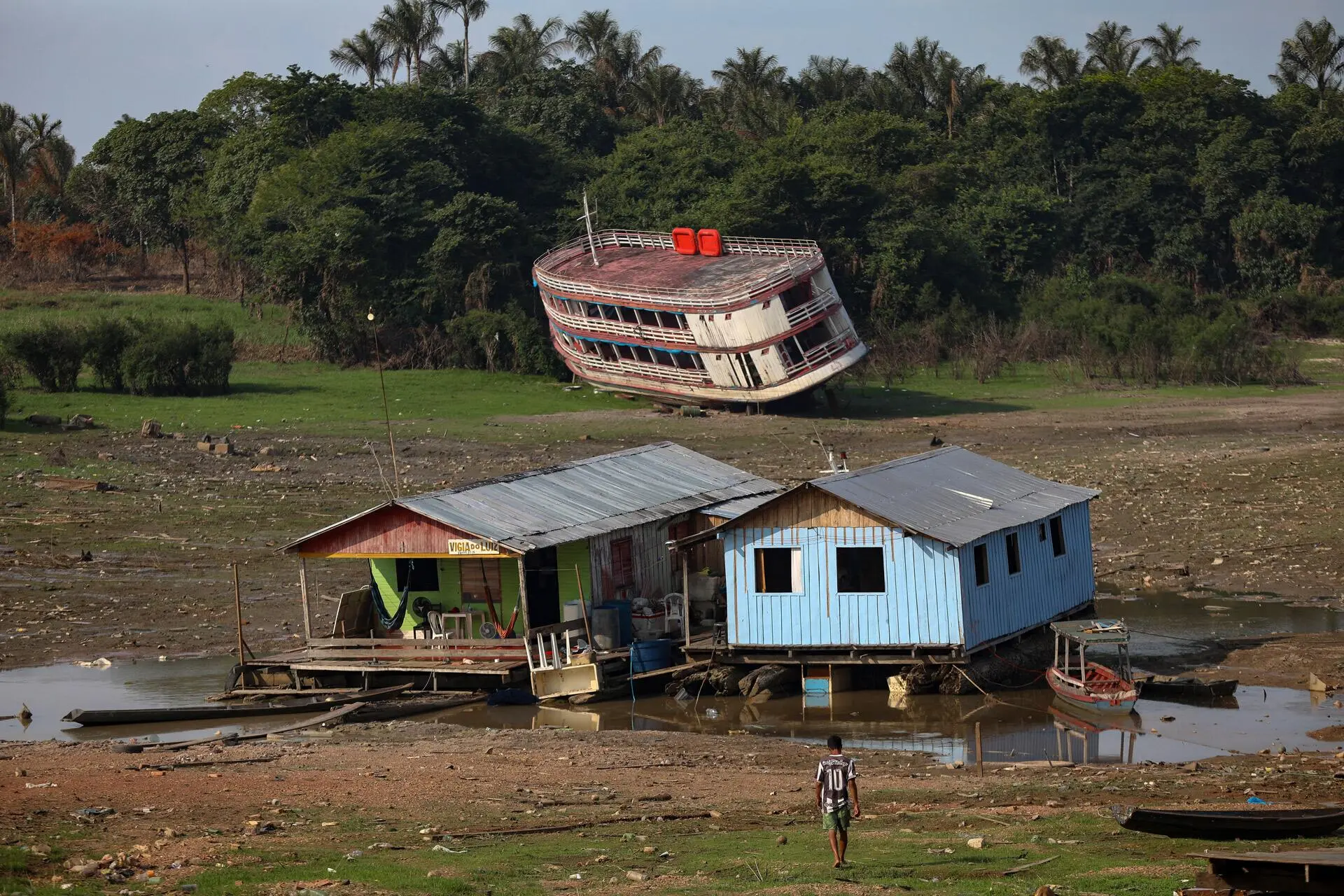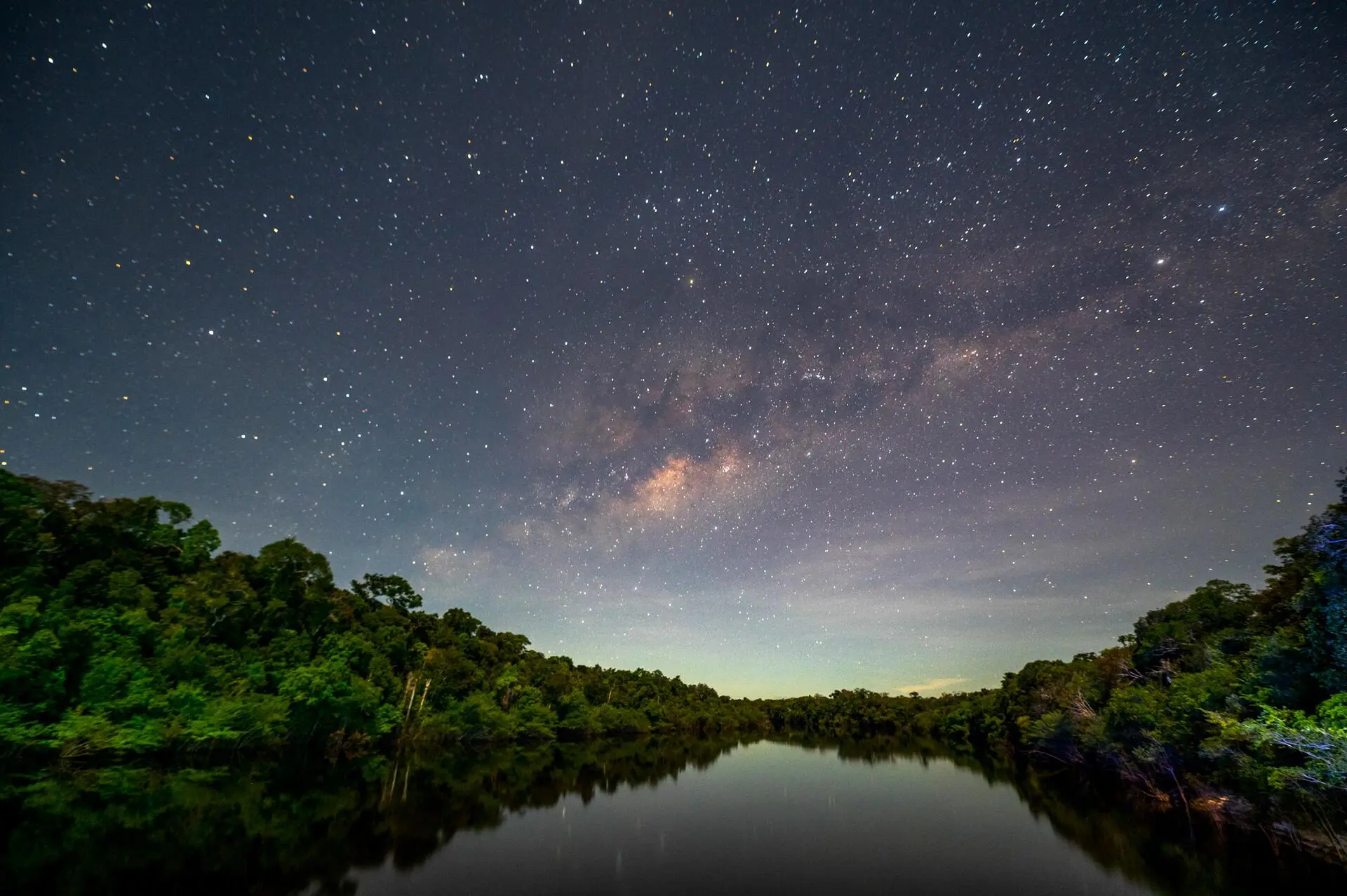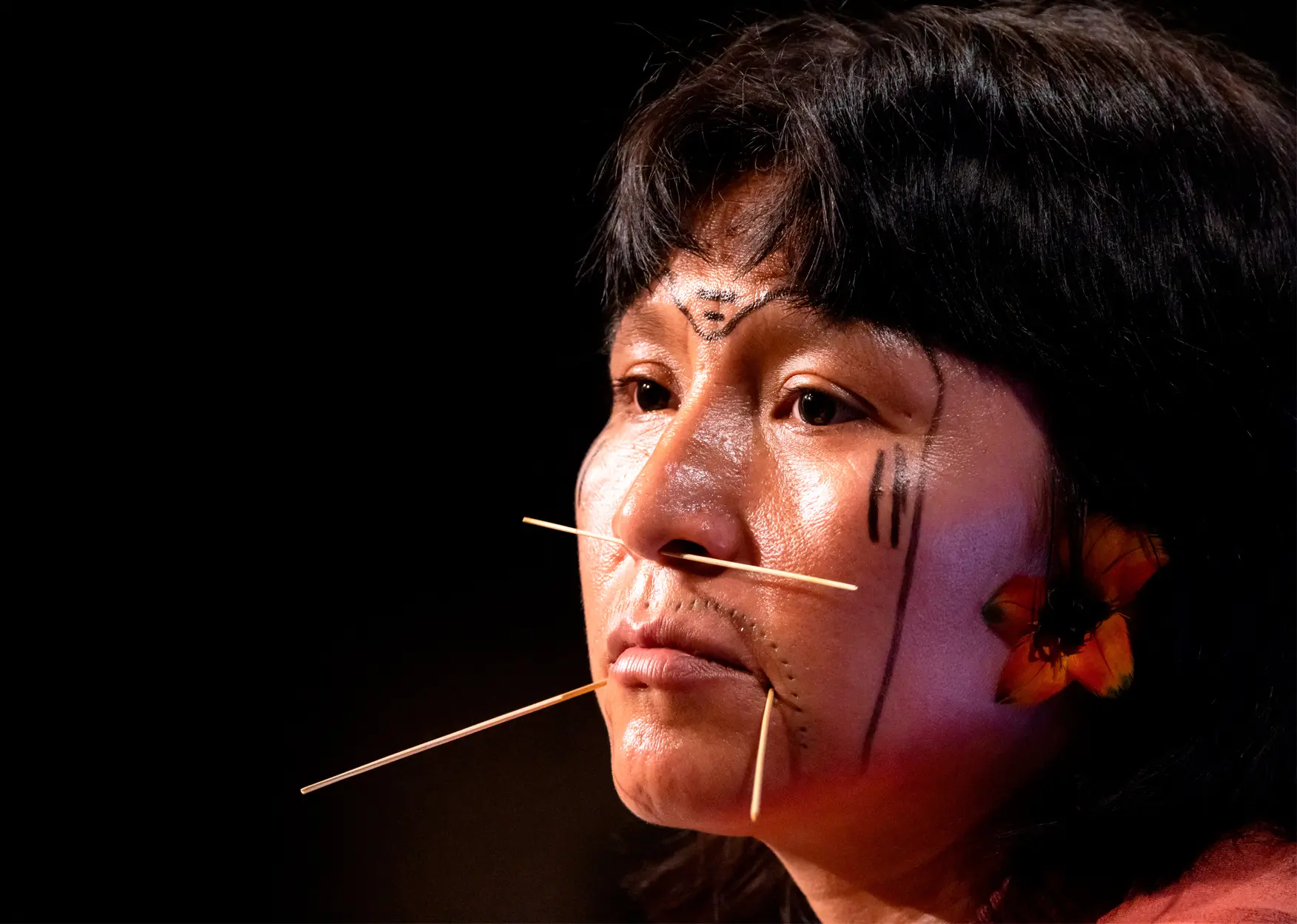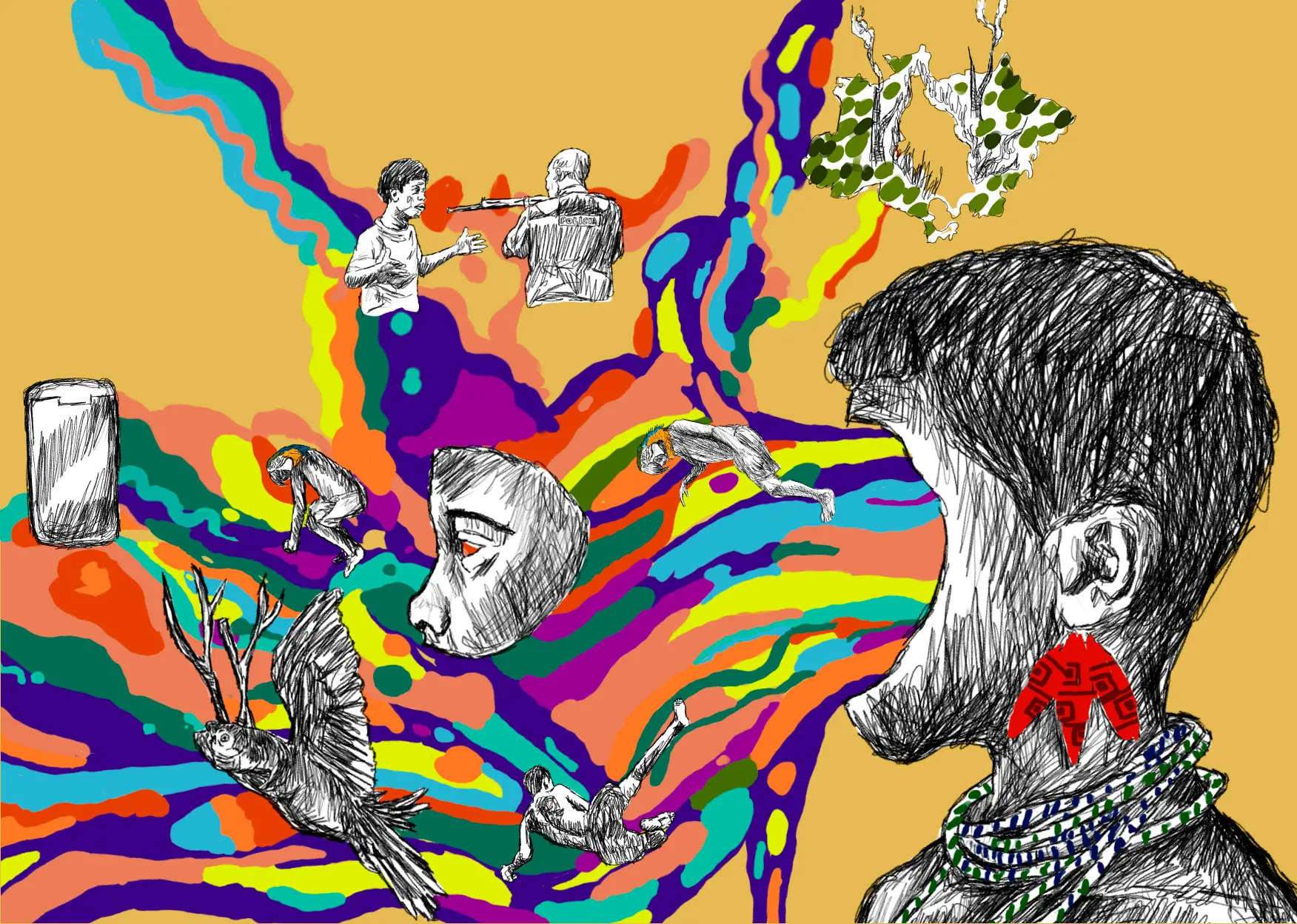In recent decades, many studies have shown how the process of destroying the Amazon through burning and deforestation, along with increasingly intense and frequent droughts, is affecting the forest’s ability to recover and leading it to a point of no return. Yet few investigations have spent time looking at the different ways these events affect different parts of the forest. That was what one study published on Wednesday in the journal Nature did, using historical data from recent major floods to identify each biome’s degree of resilience. It is precisely in the arc of deforestation, the Amazonian region with the highest rates of destruction, that the results find areas more vulnerable to drought and with less ability to regenerate – that means this is where the forest could more rapidly cease to exist along with its ability to regulate the climate.
The arc of deforestation stretches nearly 500,000 square kilometers from western Maranhão and southern Pará toward the western Amazon, cutting through Mato Grosso, Rondônia, and Acre.
The idea of studying how each region in the Amazon would specifically react to drought was brought up a few years ago, when scientists noticed that research results on this topic were inconsistent: while some found regions where plants dried up and died, others pointed out that, conversely, plants were putting out new leaves in other areas of the Amazon. Antonio Nobre, an Earth scientist who has spent decades studying the forest while working at the National Institute for Amazonian Research (Inpa) and Brazil’s National Institute for Space Research (Inpe), suspected the explanation could lie in the contrasting local characteristics in each of these regions, such as the terrain and ground water. “This study was driven by a recognition that the forest is rich and heterogeneous. There are many forests in one,” says Nobre.
To find out more, researchers from three countries, led by Shuli Chen of the Ecology and Evolutionary Biology Lab at the University of Arizona, used 20 years of data collected by satellite: from 2000 to 2020, a period that includes major floods in 2005, 2010, and 2015. The investigation looked at the Amazon’s health based on factors such as photosynthetic activity – a process where plants absorb sunlight and turn it into energy to grow. In analyzing the impact of these climate events on each sector, they found that in the Amazon’s North Region, an area lying within the Guiana Shield (Brazil, Venezuela, French Guiana, Suriname, Guyana), the forest was more resilient to drought, as most of the soil is naturally less fertile, so the trees are taller and have long roots to reach the deeper groundwater. In Brazil, the states of Amazonas, northern Pará, practically all of Roraima, and western Amapá are located on the Guiana Shield. “The trees grow slower in the northern Amazon, with their tall crowns, deep roots, and relatively infertile soil, it seems they’ve adapted to adverse conditions,” Chen notes.
Meanwhile, in the Amazon’s South Region, which has more soil that is relatively fertile and shorter trees, two simultaneous reactions were found. On low altitude lands near watercourses, greening was found to occur due to two factors. First, there is more sunlight during droughts because of a lack of clouds, leading to a photosynthetic boost. The second reason is that “the water in these lower locations, where under typical conditions the roots are submerged, recedes somewhat during a drought, but remains accessible. This lets the more exposed roots absorb oxygen without losing access to water,” explains Nobre, who developed the method the group used to estimate water-table depths using satellite data and land modeling. These local conditions, which allow oxygen to be absorbed through the roots, which also capture water and nutrients from the soil, are fundamental to plant growth.

Regions of the Amazon are increasingly affected by extreme climate events, like prolonged droughts, made more intense by the planet’s heating. Photo: Michael Dantas/AFP
On the other hand, the trees in the South Region that grow on higher land and over deeper water-tables suffered an inverse and greater impact from the prolonged lack of rain, since they occasionally ended up with no water to absorb from hills and plateaus – the layers furthest from the water-table. Consequently, the forests become much drier, which brought about plant mortality and created conditions for fire to enter and spread, hindering or impeding the areas from regenerating.
These discoveries are concerning, the article’s authors warn, since these old growth forests in the South Region are specifically more impacted by deforestation and degradation, another main vector in the biome’s destruction. “As predicted by the theory that the Amazon will turn to savannah, this multiple impact of droughts and fire reduces the carbon absorbed by the forest and, worse, eliminates trees and, with them, priceless climate services in cooling the air and creating and regulating flying rivers,” Nobre points out, referring to the mass of air and water vapor the trees produce when they transpire, helping to regulate the climate.
Antonio Nobre says this collaborative international study shows extraordinary aspects of the Amazon’s complexity, the Earth’s richest biome. The idea is that this new understanding of regional differences will provide a framework for conservation decisions and improved predictions of forest responses to future climate changes, the researchers explain. This includes decisions on prioritizing areas to fight deforestation and forest recovery. The investigation also warns that the Amazonian forests with the greatest ability to sequester carbon are the ones most at risk. “It’s as if we had used a blurry image,” Chen says. “When we talk about Amazonia being at risk, we’re talking about this as if it were just one thing. This article shows that Amazonia is a rich mosaic where some parts are more vulnerable to changes than others, and it explains why. This is essential to understand the system and protect it.”
Report and text: Jaqueline Sordi
Editing: Talita Bedinelli e Eliane Brum
Photo Editor: Lela Beltrão
Fact-checker: Plínio Lopes
Proofreader (Portuguese): Valquíria Della Pozza
Spanish translation: Julieta Sueldo Boedo
English translation: Sarah J. Johnson
Copyediting and finishing: Natália Chagas
Editorial workflow coordination: Viviane Zandonadi
Editor-in-chief: Talita Bedinelli
Editorial director: Eliane Brum

Researchers say the new study can help in creating strategies to fight and prevent the fires and deforestation that are leading the forest to the point of no return. Photo: Mauro Pimentel/AFP




